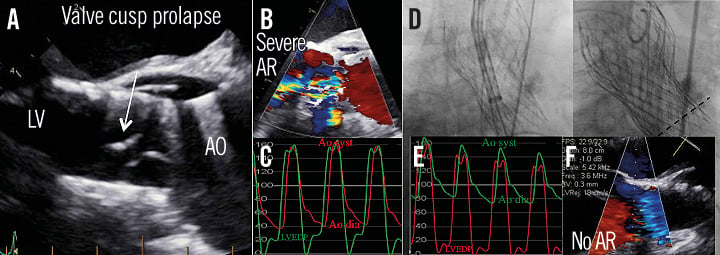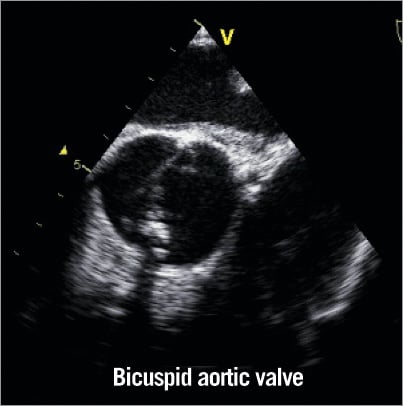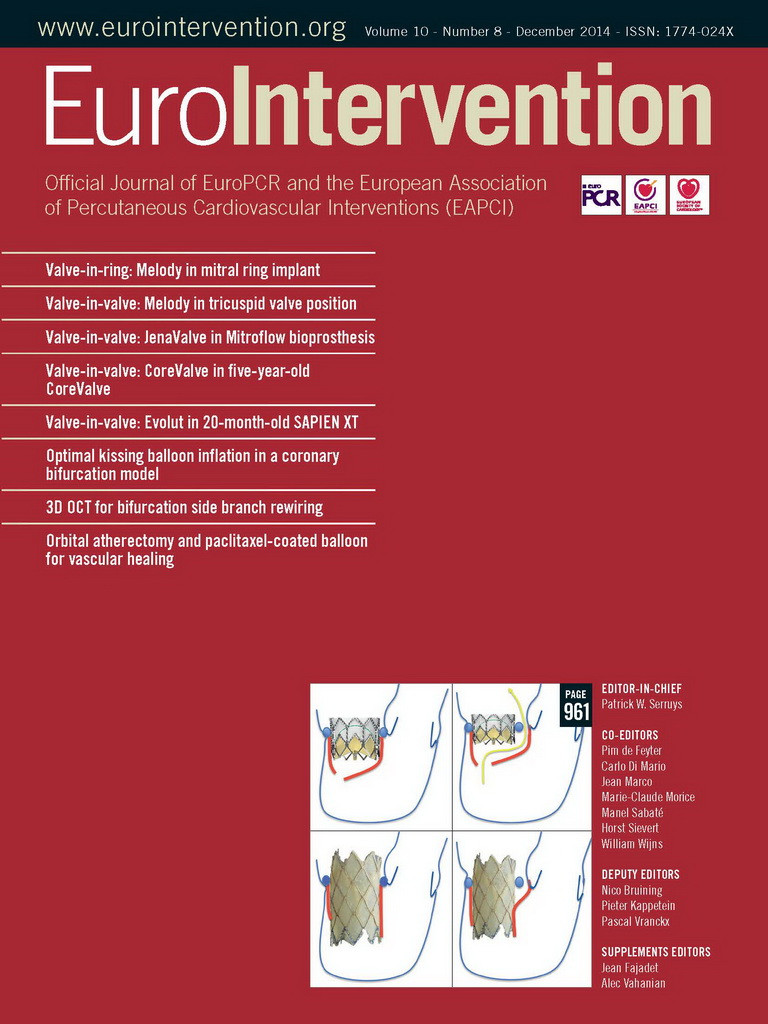We present the case of a 67-year-old male who presented with a degenerated 29 mm CoreValve (Medtronic, Minneapolis, MN, USA) five years after its successful implantation for severe bicuspid aortic valve stenosis (Online Figure 1). During the most recent hospitalisation, for an acute coronary syndrome, transoesophageal echocardiography (TEE) detected a new-onset severe transvalvular AR due to a prolapsing bioprosthetic valve leaflet (Figure 1A, Figure 1B, Figure 1F, Moving image 1). Signs and symptoms suggestive of endocarditis were absent. The Heart Team decided to proceed with a transcatheter aortic valve in transcatheter aortic valve (TAV-in-TAV) implantation using a 29 mm CoreValve prosthesis (Figure 1C). Contrast aortography and TEE confirmed no transvalvular regurgitation and residual mild paravalvular AR (Figure 1D, Moving image 2) with a transvalvular gradient <10 mmHg. The haemodynamic AR index increased significantly from 10.2 to 42.0 (Figure 1C, Figure 1E). After the procedure, the patient improved progressively and was discharged four days later with New York Heart Association functional Class I-II.

Figure 1. Late structural transcatheter aortic valve degeneration after transcatheter aortic valve replacement. Severe aortic regurgitation (AR) due to prolapse of one cusp of the CoreValve by TEE (A&B). After TAV-in-TAV, TEE confirmed competent leaflet coaptation of the new prosthesis without significant AR (D&F), and the haemodynamic AR ([Aodia–LVEDP]/Aosyst ×100) increased significantly from 10.2 ([40-24/158]×100) to 42.0 ([79-13/157]×100) (C&E).
Little is known about the long-term durability and outcomes of transcatheter aortic valves. Undoubtedly, valve durability emerges as the most persistent criticism of transcatheter aortic valve replacement (TAVR). To the best of our knowledge, there has been only one other case report of late structural valve degeneration of a transcatheter valve after TAVR. It seems that, similar to most surgical bioprosthetic tissue valves, such valves deteriorate with time, meaning that there is adequate warning and time for a planned second procedure (e.g., TAV-in-TAV). Thus, valve durability, although critical, is not necessarily the key factor in keeping patients alive.
Conflict of interest statement
N. Piazza is a proctor for and has received speaker’s fees from Medtronic Inc. The other authors have no conflicts of interest to declare.
Online data supplement
Moving image 1. Severe aortic regurgitation (AR) presentation due to prolapse of one cusp of the transcatheter heart valve (THV) (A&B).
Moving image 2. Transoesophageal echocardiography (TEE) confirmed competent aortic valve leaflet coaptation without transvalvular regurgitation and residual mild paravalvular AR.

Online Figure 1. Native calcified bicuspid aortic valve by transoesophageal echocardiography (TEE).
Supplementary data
To read the full content of this article, please download the PDF.
Moving image 1a. Severe aortic regurgitation (AR) presentation due to prolapse of one cusp of the transcatheter heart valve (THV).
Moving image 1b. Severe aortic regurgitation (AR) presentation due to prolapse of one cusp of the transcatheter heart valve (THV).
Moving image 2. Transoesophageal echocardiography (TEE) confirmed competent aortic valve leaflet coaptation without transvalvular regurgitation and residual mild paravalvular AR.

